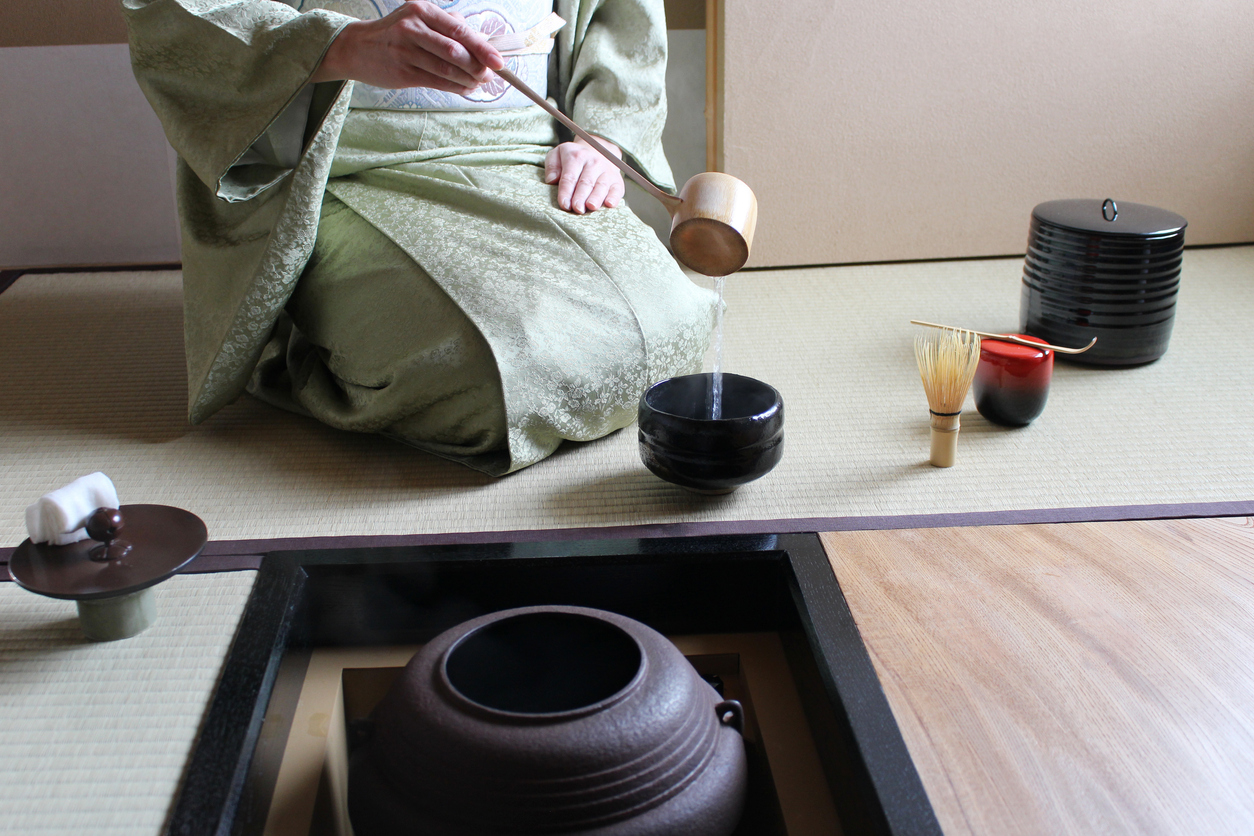
In a city where every alleyway whispers history and every temple seems to breathe, there’s a quiet experience that stands apart from the usual tourist checklist. It doesn’t involve flashy sights or adrenaline. It involves stillness, silence, and a cup of tea — served with precision and deep intention. This is the Japanese tea ceremony, and Kyoto is where it comes alive.
To the untrained eye, it might look simple. But underneath every bow, every scoop, every turn of the cup, there’s centuries of philosophy and aesthetics at play. Attending a tea ceremony in Kyoto isn’t just about sipping matcha — it’s about entering a space where time slows, the outside world dissolves, and you’re invited to fully show up in the present moment.
Here’s what it’s really like to attend a traditional tea ceremony in Kyoto — what to expect, what it means, and why it lingers long after the last drop.
First: What Exactly Is a Tea Ceremony?
Known as chanoyu, sado, or chado, the tea ceremony is a ritualized preparation and serving of matcha (powdered green tea). But it’s more than a beverage ritual — it’s a form of meditation, art, hospitality, and cultural transmission all rolled into one.
Rooted in Zen Buddhism, the ceremony is built on four principles:
- Wa (harmony)
- Kei (respect)
- Sei (purity)
- Jaku (tranquility)
It’s about intention, presence, and aesthetics — from the selection of the tea bowl to the placement of flowers in the waiting room.
Where to Attend One in Kyoto
Kyoto is the heart of traditional Japanese culture, and it offers tea ceremonies in everything from centuries-old temples to modern studios. You can choose between:
- Formal tea schools (like Urasenke or Omotesenke) — authentic and precise, often in historic homes or dojos.
- Cultural centers — accessible and tourist-friendly, with explanations in English.
- Temple-based ceremonies — often seasonal, outdoors, or tied to festivals.
- Ryokan experiences — tea as part of a broader stay in a traditional inn.
Popular spots include:
- Camellia Tea Ceremony (near Kiyomizu-dera) – great English guidance, welcoming to beginners.
- Tea Ceremony KOTO (in Gion) – small groups, quiet atmosphere.
- Nishiki Warai – includes kimono rental + ceremony, for the full immersive effect.
Before You Go: What to Expect
This isn’t your average cup of tea. Even the short versions (30–60 minutes) involve specific gestures, quiet observation, and seated formality. Here’s a rough breakdown:
- Arrival – You’re greeted, often in a tatami-matted room or a tea garden.
- Purification – You may be invited to wash your hands symbolically, clearing both literal and metaphorical dirt.
- Sweets – A seasonal wagashi sweet is served first — delicate, artful, and meant to balance the bitter matcha.
- Tea preparation – The host (or tea master) silently prepares matcha using a bamboo scoop and whisk, in a fluid, practiced sequence.
- Drinking the tea – You’re instructed how to bow, how to turn the cup, and how to drink — slowly, with intention.
- Closing – A final bow, a thank you, and sometimes a few words about the tools used or the history of the tradition.
How It Feels
Time bends. That’s the first thing you notice. What takes minutes feels much longer — not because it’s boring, but because every motion is deliberate.
The air is quiet. There’s no music. No chatter. Just the sound of the water pouring, the whisk tapping the bowl, the soft rustle of silk.
The tea isn’t sweet. It’s rich, earthy, and vegetal — almost shocking if you’ve never had real matcha. But paired with the wagashi sweet, it balances perfectly.
You’re not just a guest. You’re a participant in something centuries old. And that weight, that grace — it’s felt in the posture, the gestures, the silence between sips.
The Tools: More Than Utensils
Part of the ceremony’s magic is in the tools, each selected to match the season and mood:
- Chawan – the tea bowl; often handmade and chosen for its imperfection.
- Chasen – a bamboo whisk used to froth the matcha.
- Chashaku – the bamboo scoop for measuring tea powder.
- Natsume or chaire – the tea caddy; polished, small, and discreet.
- Kensui – a waste-water container, often hidden.
Even the scroll in the tokonoma alcove, or the flower arrangement in the corner, has meaning. Everything in the room is intentional.
What You’ll Learn (Without Being Told)
- Patience. Nothing is rushed, and that’s the point.
- Awareness. Your senses tune in — to smell, texture, sound.
- Respect. Not as formality, but as attention. The tea isn’t just served — it’s offered.
- Simplicity. There’s elegance in plain things. A bowl, a ladle, a smile — that’s all you need.
Cultural Tips and Etiquette
- Punctuality matters. Arrive early.
- Dress modestly. Avoid strong perfumes or loud clothing.
- Turn off your phone. Or better yet, leave it behind.
- Bowing is a sign of gratitude, not submission.
- Follow the host’s lead. They’ll guide you gently through every step.
If you’re unsure, just move slowly and respectfully. The host expects curiosity, not perfection.
Best Times to Go
Kyoto’s tea houses operate year-round, but seasonal differences change the mood:
- Spring: Cherry blossom-themed sweets, fresh green views, floral scrolls.
- Summer: Light kimono, bamboo tea scoops, cool bowls.
- Autumn: Red maple leaves, earthy wagashi, deeper matcha tones.
- Winter: Warm tea, heavy bowls, and the quiet hush of snow outside.
Each season has its own rhythm — and tea adjusts to match it.
Attending a traditional tea ceremony in Kyoto isn’t just a cultural “thing to do.” It’s an encounter — with slowness, with intention, and with a form of hospitality unlike anything else. It’s not entertainment. It’s art. It’s philosophy. And it will stay with you long after the tea bowl is empty.
You may walk in expecting to drink matcha. You’ll walk out having touched a deeper stillness — one that’s quietly, unmistakably, Japanese.







